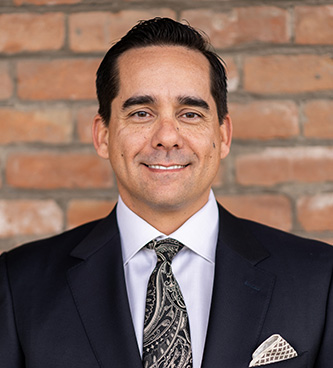What do successful NCAA basketball teams competing in this year’s NCAA tournament have in common with personal injury law within your community? Outside the possibility of an injury occurring on the basketball court, most would probably assume that there are absolutely no similarities. Well, your Arizona personal injury attorneys at Torgenson Law beg to differ.
Let’s first stop and take a general look at how your favorite NCAA basketball team will be successful in the tournament this year. Will one individual superstar carry the team? Well – aside from a select few lineups, the chances are probably not. The teams who win on a consistent basis are made up of a group of individual players who each bring something to the court as a team player. Each player maintains a high level of competitive intensity and the team shares a unified mind-set. They play within a well-planned and strategic system that the coach has designed and implemented. The end result is that the best teams will be triumphant.
Now, lets parallel this same game winning mentality to avoid precipitating a personal injury here in Arizona. Similar to NCAA basketball in that one superstar cannot create a winning team, one individual person cannot single handedly deter all personal injury mishaps within their community. Instead a winning community must become an effective working team by abiding by rules and regulations put into place by governing bodies. Both the NCAA and local communities enact laws (or rules) for the safety of the public (and players) and although the NCAA and society use different vernacular in describing these circumstances, there is one particular similarity.
Regardless of on the basketball court or in our community, what happens when one play’s outside the system and violates rules and regulations enacted for safety? Let’s imagine two scenarios:
The first, a driving scenario in which Driver A, intentionally or unintentionally, runs a red light causing a collision with a another car, Driver B. In legal terms, if that motor vehicle accident resulted in a personal injury to Driver B, the red light runner who is Driver A, would be liable for personal injury under the negligence per se theory.
Now, lets put this in terms that would coincide with last Friday afternoon’s first-round NCAA Tournament matchup between Seton Hall and Arkansas. In this second scenario, Seton Hall forward, Desi Rodriguez, reached out and two-hand pushed Arkansas guard, Jaylen Barford in the back, causing him to fall to the ground. Whether Rodriguez meant to push Barford to the ground or not, he was charged with a flagrant foul. Seton Hall may have already been trailing by one point at the time of the foul, but it could still be argued that liability for the loss should be placed on Rodriguez for the irresponsible play. Essentially, he diminished any chance for a last minute comeback.
So, where does the similarity lie amongst these two very different circumstances? In the first scenario, the driver is negligent per se because he violated a law enacted for the safety of the public by running a red light. In the second scenario, Stetson Hall forward, Desi Rodriguez violated a rule enacted for the safety of the players by pushing Arkansas guard Jaylen Barford in the back, causing him to fall. Both the NCAA and Arizona governing officials recognize that laws (or rules) must be put in place to protect the safety of the public (and players). In a way, you could claim that Rodriguez was negligent per se in his actions and that Driver A committed a fragrant foul by running a red light.
Next, consider how winning basketball teams are formed. I can tell you that such teams are not formed over night. Individual team members must have the desire to practice and put in the hard work required to gain the outcomes that are expected by the coaching staff and surrounding teammates. The best teams will almost always find a way to turn those practice scenarios into key plays when the game is on the line, but keep in mind, I said almost.
Lets take a brief look at last years tournament match up between Texas A&M and Northern Iowa. This particular game is referred to as one of the greatest NCAA basketball comebacks as Texas A&M overcame a 12 point deficit with 44 seconds left to win the game. Although there were a number of individual errors made in the last 44 seconds which are be to blame for the loss, we’ll assess one specific turnover: With less than 11 seconds left in the basketball game, Northern Iowa’s Wes Washpun encountered heavy pressure in the corner following an inbound pass. Trapped with no easy outlet, he attempted to throw the ball off an opposing player as he fell out of bounds. The experienced opposing player stepped back, stole the ball, and darted to the basket for the game tying layup.
Because no one was actually injured in this scenario, one may again wonder how the above relates to personal injury law? Well, imagine another unrelated scenario in which you and a group of friends are enjoying an afternoon at a waterpark when you spot a drowning person. Fortunately, there is a lifeguard on duty. That lifeguard is expected to have undergone proper training and possess the appropriate certification to competently handle the situation. As such, the lifeguard would have a duty to pull the drowning person out of the water. If the lifeguard did not live up to that obligation and the drowning person was seriously injured or worse, the lifeguard could be held liable for negligently reacting to the situation. Here’s why: The lifeguard’s failure to act in an appropriate manner would have been a breach of their duty to competently assist the drowning person. In this regard, the lifeguard’s failure to act would have directly caused injury to the drowning person.
As a guard, the Northern Iowa coaching staff and surrounding teammates expected Washpun to competently handle the ball one on his side of the court, just as one would expect the lifeguard to competently handle a drowning situation. Although the two roles differ greatly, the lifeguard and point guard are held to a higher standard of care due to their excessive amount of practice and training. In personal injury terms, we could claim that Washpun was negligent for turning the ball over. Here is why: As a guard, Washpun is expected to protect the basketball from the opposing team- his duty. He breached that duty when he panicked in the short corner and turned the ball over to a player on the opposing team, which directly caused the basket – causation. Because of the turnover, which directly caused the tying basket, the game went into overtime and Northern Iowa lost – damages.
I hope you enjoyed our take on the similarities between personal injury law and the NCAA basketball tournament. Your Arizona personal injury attorneys wish everybody a safe and exciting NCAA tournament. If you suffer a personal injury at the fault of another, please give Torgenson Law a call for at (602) 726-0747 for a free consultation. We will fight for the just compensation you deserve.

John Torgenson is a highly experienced personal injury lawyer with over 20 years of practice in Arizona. He earned his Bachelor’s degree from the University of Utah and his Juris Doctor from Notre Dame. John has a proven track record of securing substantial verdicts and settlements, including an $8.25 million recovery for a gunshot injury victim. His expertise has earned him AVVO ratings and recognition as a Super Lawyer.
John is also a sought-after lecturer on personal injury law, sharing his extensive knowledge with peers and aspiring attorneys. Beyond his legal practice, John is an avid golfer and actively supports organizations like the Military Assistance Mission, Arizona School for the Arts, Page Balloon Regatta, University of Arizona Foundation, Junior Achievement of Arizona, and the Tim Huff Pro Bono Golf Classic.
Passionate about advocating for injury victims, John dedicates his career to battling insurance companies and corporate interests, ensuring that the rights of those who are hurt are vigorously defended.
